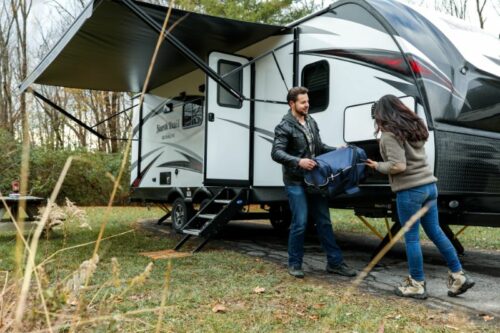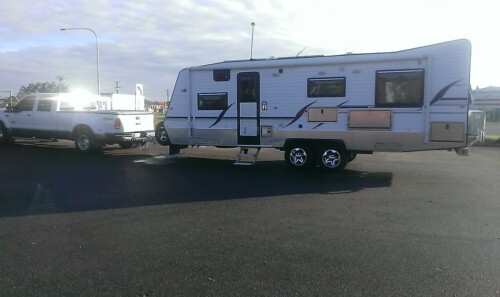If you’re new to the RV lifestyle, it might be a tad bit confusing trying to figure out how to store your food properly.
Traveling light is also one of the biggest challenges when traveling by RV or van. It’s hard enough to pack all the clothes, shoes and gadgets that you need for a trip without having to worry about lugging around heavy cans of corn or jars of jam. Not only are these things bulky, but they also take up precious space in your RV/van.
On my second trip in an RV in Johannesburg, South Africa, I went a bit overboard trying to decide what to pack and how to store food because our van was smaller than the first. So …. I bought in bulk to avoid going to the store regularly.
Alas, it didn’t end well as some of them got spoiled, and I had a hard time storing them effectively. Luckily, I’ve learned some tips for storing all kinds of food, whether it’s fresh or frozen.
THINK SIMPLE AND SMALL WHEN PLANNING
One of the best ways to ensure that you’re eating healthy, fresh food is by planning ahead. Don’t try to prepare huge meals with lots of ingredients; instead, plan easy-to-make dishes that can be made with minimal equipment.
- Sandwiches and wraps
- Casseroles and pastas (can be reheated)
- Soups and stews (eaten hot or cold)
Avoid raw meat, frozen food, and dairy.
MAXIMIZING SPACE WITH STACKABLE FOOD CONTAINERS FOR YOUR RV
One of the best ways to maximize space in your RV is with stackable food containers. They’re easy to store and easy to organize, making them great for food storage and meal prep.
Stackable food containers are also perfect for storing other items too, like cleaning supplies. To get started, all you need is a few square feet of floor space to create an efficient new storage area that will help make your time on the road a little easier.
STORING FROZEN FOOD
If you don’t have a built-in freezer, store frozen food on the bottom shelf of your RV refrigerator. Do not stack it, and don’t put it on top of anything else (like a box of baking soda). Put it in a plastic bag if possible so that no moisture can get to the food. If you have to leave some out overnight, take it out of its packaging (this makes sure it doesn’t get soggy) and wrap it tightly in a paper towel before putting it back into its original container or bag.
Here are some of my favorite tips for storing frozen food in your RV fridge:
- Put a small 12V computer fan inside your fridge to help circulate cold air.
- Turn on your RV absorption fridge at least 12 hours before departure!
- RV refrigerators usually run best off 110-volt AC or propane power.
- Pre-cool your fridge with portable frozen ice packs.
- If you’ll be camping off-grid, pack your frozen goods in a 5-day cooler filled with ice.
- Pick cubed ice over crushed; the bigger the ice block, the longer it lasts.
We typically used a Foodsaver® to vacuum-package leftovers we wished to finish eating later on, or we just buy extra cooked foods to take with us. For longer-term storage, this is far superior to freezer-type plastic bags.
Also, frozen fish should be kept at 0 degrees Celsius or lower at all times while they’re being stored in your RV’s freezer. This keeps them safe from spoilage because they’ll still be completely frozen when they reach room temperature again later on—so long as there isn’t any problem with your RV fridge.
BULK BUYING
Buy in small quantities. Stop shopping in bulk and dragging it about with you, whether it’s groceries, laundry supplies, or other supplies. This was one mistake we made while on our second trip in South Africa. We ended up not using all supplies, plus the extra weight of driving around a heavier-than-necessary RV.
Making a grocery list with quantities on it is one way to avoid overbuying. Instead of just writing “chicken soup” on the grocery list, write “1 can of chicken soup.” This can help you avoid overbuying, regardless of the wonderful sale price.
Lastly, overbuying when living in an RV creates unique challenges—where do you put stuff when you return to the coach? Very important. You can always make stops at the store to fill up when your supplies, including foods are out.
RV REFRIGERATOR FOOD STORAGE AND USE TIPS
The following are the best tips for storing food in your RV refrigerator:
- Refrigerated food should be packed as firmly as possible.
- Before using, smell the milk for deterioration.
- Keep leftovers for as little time as feasible.
- Check that your temps are chilly enough to keep food safe (40 degrees is best)
- If you don’t have an ice machine, produce new cubes at least once a week and keep them in zip-lock plastic bags.
- Always remember to shut and lock the doors during transit!
- Make sure your RV is level every time you park it so the refrigerator can continue to function.
- Change the parameters as needed to account for temperature variations outside.
- Regularly defrost the freezer. You can use a hair dryer to defrost ice buildup.
PACK DRY FOODS
Packing dry foods helps you limit waste as much as possible. I’ve discovered that the easiest method to store them is in medium-sized plastic baskets so they don’t slide around.
You can also group them for easier access and more evenly divide their weight this way. While in your RV, you can always combine hot water with any of these powdered or dry foods:
- Dry soups
- Oatmeal
- Baked beans
- Potatoes
- Teabags,
- Fruits and Vegetables
- Veggies
- Coffee powder,
- Hot chocolate powder
- Dry nonfat milk.
This is because:
- Dry foods are lightweight.
- They’re easy to store.
- They last a long time.
- They’re easy to prepare.
WHAT TUPPERWARE IS BEST FOR FOOD STORAGE
Well, if you’ve got a bunch of leftovers to keep fresh, I recommend the Snapware Airtight 3-piece set. This set includes three containers with snap-on lids that make it easy to get air out of your containers. It also includes one large container and two medium ones, so you can store any size of food in it.
Using brightly colored plastic baskets makes it easy to organize and store canned goods while also preventing them from falling or rolling out of cupboards. I never travel without a supply because they are so essential, sanitary, and easy to store.
Plastic baskets are more sanitary for this purpose, and if you buy them, you can easily stack and store them when not in use.
If you’re looking for something that won’t leak when it tips over, then I recommend the Snapware 28-Piece Airtight Food Storage Set. It comes with everything you need for storing your food safely: 28 pieces in total, including two large containers, two medium containers, and 24 small containers. They all come with airtight lids.
REASONS TO INVEST IN AIRTIGHT CONTAINERS
- Food stored in airtight containers will stay fresher longer by keeping out bugs and preventing the growth of mold.
- Air circulates freely around food, which allows it to dry out. When moisture evaporates from food, it leaves behind a stale taste that you can’t get rid of no matter how many times you brush your teeth with Listerine.
- You’ll also want to use airtight containers when freezing any perishable foods like soup because they’re likely to leak if left uncovered.
***
I hope this article has helped you learn how to store food in an RV. I’ll be honest—it’s not as easy as it first looks. But with some planning, a lot of research, and a bit of ingenuity, you can do it!
Full-time solopreneur and digital nomad, Amarachi helps businesses grow their online presence by building eye-catching content. She’s from Nigeria and is the life of the party wherever she goes. When she is not writing, she’s exploring and embarking on different destinations.
-
Amarachi Ogbonnayahttps://changingears.com/author/amarachi-ogbonnaya/
-
Amarachi Ogbonnayahttps://changingears.com/author/amarachi-ogbonnaya/










